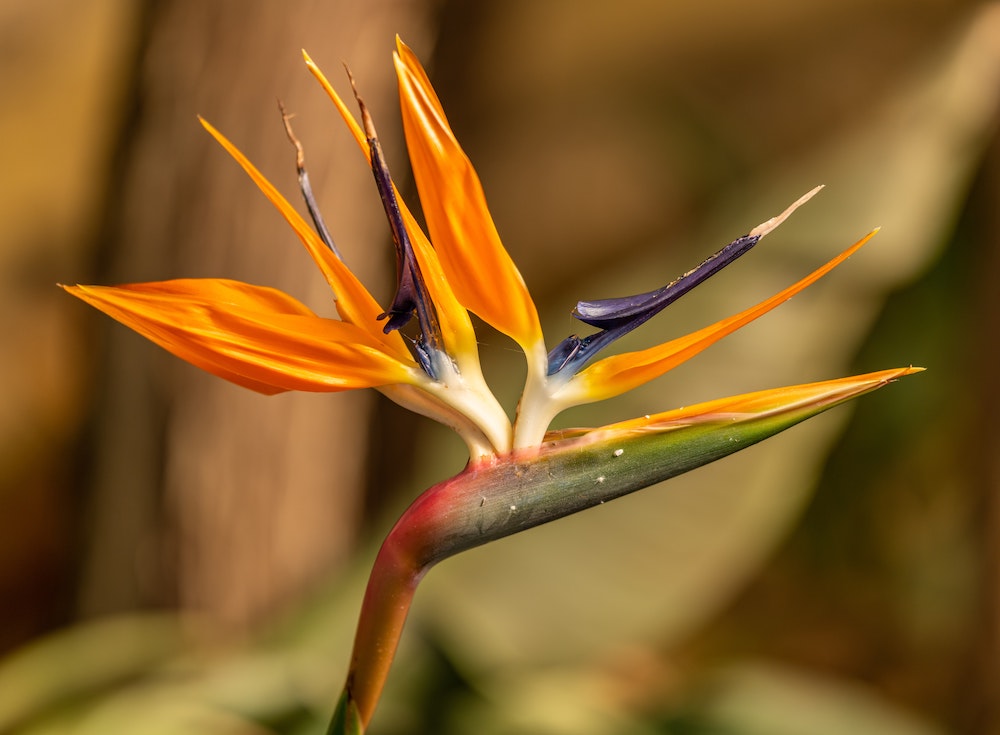Master the art of birds of paradise plant care with our comprehensive guide: tips, techniques, and troubleshooting for thriving tropical beauties.
Birds of Paradise plants, scientifically known as Strelitzia, are beloved for their striking, bird-like flowers and lush foliage. Originating from South Africa, these tropical beauties have captured the hearts of plant enthusiasts worldwide. While their stunning appearance may seem intimidating to some, caring for Birds of Paradise plants can be a rewarding experience for both novice and experienced gardeners. In this comprehensive guide, we will delve into the intricacies of Birds of Paradise plant care, providing you with valuable tips and insights to help you cultivate healthy, vibrant specimens.
Table of Contents:
- Understanding Birds of Paradise Plants
- a. Types of Birds of Paradise Plants
- b. Characteristics and Growth Habits
- Setting Up the Perfect Environment
- a. Light Requirements
- b. Temperature and Humidity c. Soil and Potting Mix
- Watering and Feeding
- a. Watering Guidelines
- b. Fertilizing Techniques
- Pruning and Maintenance
- a. Trimming and Shaping
- b. Dealing with Pest and Disease Issues
- Propagation Methods
- a. Seed Propagation
- b. Division
- Troubleshooting Common Issues
- a. Yellowing Leaves
- b. Lack of Blooms
- Frequently Asked Questions
Understanding Birds of Paradise Plants
a. Types of Birds of Paradise Plants
The term “Birds of Paradise” refers to two main species within the Strelitzia genus: Strelitzia reginae (commonly known as the Orange or Mandela’s Gold Bird of Paradise) and Strelitzia nicolai (commonly known as the White Bird of Paradise). Both species share similar care requirements, but they differ in their growth habits and flower coloration.
b. Characteristics and Growth Habits
Birds of Paradise plants are known for their large, banana-like leaves that grow in a fan-like pattern, creating a tropical and exotic appearance. Strelitzia reginae typically reaches a height of 4 to 5 feet, while Strelitzia nicolai can grow as tall as 20 feet, making it suitable for larger spaces. These plants produce stunning, bird-shaped flowers that come in vibrant shades of orange and blue, adding a touch of exotic beauty to any garden or indoor space.
Setting Up the Perfect Environment
a. Light Requirements
Birds of Paradise plants thrive in bright, indirect light. Place them near a window with filtered sunlight or in a partially shaded area outdoors. Avoid exposing them to direct sunlight for extended periods, as it can scorch the leaves.
b. Temperature and Humidity
These tropical plants prefer warm temperatures ranging from 60°F to 72°F (15°C to 22°C). They can tolerate slightly lower temperatures but may suffer damage if exposed to frost or extreme cold. As for humidity, maintaining moderate levels between 40% and 60% will help mimic their natural habitat. Consider using a humidifier or placing a tray of water near the plant to increase humidity indoors.
c. Soil and Potting Mix
Birds of Paradise plants prefer well-draining soil that retains some moisture without becoming waterlogged. A suitable potting mix consists of equal parts of peat moss, perlite, and regular potting soil. This mixture allows adequate drainage while retaining enough moisture for healthy root development.
Watering and Feeding
a. Watering Guidelines
Water your Birds of Paradise plant thoroughly whenever the top inch of soil feels dry to the touch. Ensure the water drains out completely, as these plants don’t tolerate standing water. During the active growing season (spring and summer), you may need to water more frequently, but reduce the frequency during the dormant period in fall and winter.
b. Fertilizing Techniques
To promote healthy growth and vibrant blooms, feed your Birds of Paradise plant with a balanced, water-soluble fertilizer every two weeks during the growing season. Dilute the fertilizer according to the manufacturer’s instructions to avoid over-fertilization, which can damage the roots. During the dormant period, reduce fertilization to once a month or suspend it altogether.
Pruning and Maintenance
a. Trimming and Shaping
Regular pruning is essential to maintain the desired shape and size of your Birds of Paradise plant. Remove any dead, damaged, or yellowing leaves by cutting them close to the stem. You can also trim back any overgrown or unruly branches to maintain a neat appearance. Be cautious when handling the plants, as they have sharp edges that can cause injury.
b. Dealing with Pest and Disease Issues
Birds of Paradise plants are generally resilient to pests and diseases. However, they can occasionally be susceptible to aphids, mealybugs, and scale insects. If you notice any signs of infestation, such as distorted leaves or sticky residue, treat the affected areas with a mild insecticidal soap or neem oil spray. Monitor the plant regularly and isolate any severely affected specimens to prevent the spread of pests.
Propagation Methods
a. Seed Propagation
Growing Birds of Paradise plants from seeds can be a rewarding but time-consuming process. Start by soaking the seeds in warm water for 24 hours to soften the outer seed coat. Plant the seeds in a well-draining seed-starting mix, covering them lightly with soil. Place the container in a warm location with indirect light and maintain consistent moisture. Germination can take anywhere from weeks to months, so be patient.
b. Division
Dividing mature Birds of Paradise plants is a quicker method of propagation. Carefully remove the plant from its container and separate the root clumps into smaller sections, ensuring each section has healthy roots and shoots. Replant the divisions in separate pots using well-draining soil, and water thoroughly. Keep the newly divided plants in a warm, shaded area until they establish roots.

Regular maintenance, including pruning to maintain shape and addressing any pest or disease issues promptly, will help your Birds of Paradise plants thrive.
Troubleshooting Common Issues
a. Yellowing Leaves
Yellowing leaves in Birds of Paradise plants can indicate various issues, including overwatering, underwatering, nutrient deficiencies, or pest infestation. Assess the watering routine, adjust as needed, and ensure the plant receives adequate light and appropriate fertilization. If pests are present, treat them accordingly.
b. Lack of Blooms
A lack of blooms in Birds of Paradise plants can be attributed to insufficient light, improper fertilization, or immature plants. Ensure your plant receives adequate bright, indirect light, provide proper fertilization, and be patient as young plants may take a few years to mature and produce flowers.
Birds of Paradise Plant Care Frequently Asked Questions
Q1: Can Birds of Paradise plants be grown indoors?
A1: Yes, Birds of Paradise plants can thrive indoors if provided with bright, indirect light and a suitable environment with proper humidity levels.
Q2: How often should I repot my Birds of Paradise plant?
A2: Repotting is generally necessary every two to three years or when the plant outgrows its current container. Signs of root-bound plants, such as roots circling the pot’s edges or water draining too quickly, indicate the need for repotting.
Q3: Do Birds of Paradise plants attract birds?
A3: Despite their name, Birds of Paradise plants do not typically attract birds. The name refers to the flower’s resemblance to tropical birds, rather than its ability to attract them.
Caring for Birds of Paradise plants is a gratifying experience that allows you to bring a touch of tropical beauty into your home or garden. By understanding the specific needs of these stunning plants, such as providing the right light, temperature, and humidity levels, as well as proper watering and fertilization techniques, you can ensure their optimal growth and health.
Regular maintenance, including pruning to maintain shape and addressing any pest or disease issues promptly, will help your Birds of Paradise plants thrive. Additionally, exploring propagation methods such as seed germination or division allows you to expand your collection or share the beauty of these plants with others.
Remember to troubleshoot common issues such as yellowing leaves or a lack of blooms, as these can often be resolved by adjusting environmental conditions or addressing nutrient deficiencies.
By following the guidelines and tips outlined in this comprehensive guide, you can confidently care for your Birds of Paradise plants and enjoy their spectacular blooms and lush foliage for years to come. Whether as a statement piece in your indoor space or a striking addition to your garden, Birds of Paradise plants will continue to captivate and enchant with their exotic allure.
So, embrace the beauty of Birds of Paradise plants, and embark on a journey of caring for these remarkable tropical wonders. With patience, attention, and a little bit of knowledge, you’ll create a thriving oasis of vibrant colors and stunning foliage that will impress and delight all who encounter them.
Happy gardening!
- Google Analytics for Beginners: Guide to Mastering Analytics - July 28, 2023
- National SEO for Lawyers: Drive Nationwide Traffic for Your Firm - July 28, 2023
- The Power of Local SEO for Lawyers: Build Your Practice - July 28, 2023


